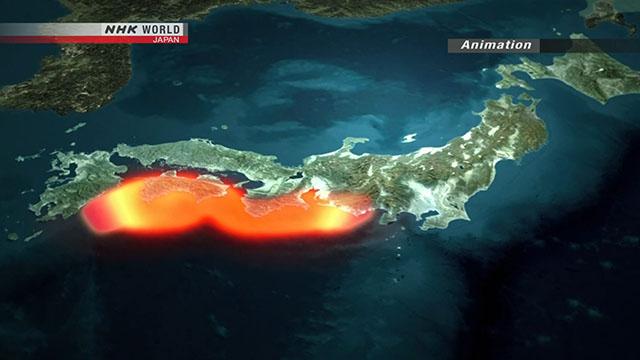The Japan Society of Civil Engineers says it would be devastating.
Its report says that if an earthquake hits the Nankai Trough off the Pacific coast, economic damage would be about 13 trillion US dollars in the worst-case scenario. That's roughly 14 times this year's national budget.
Hisakazu Ohishi, President of the Japan Society of Civil Engineers, says, "The economy of Japan would collapse due to heavy damage to infrastructure. That could make Japan the world's poorest country."
What is a national-crisis-level natural disaster?
The report warns that a national-crisis-level disaster could hit. It defines that as "a massive disaster which significantly damages the national strength of a country and could reduce its people's living standards over the long term." It cites past examples of such disasters around the world.
One is an earthquake which struck the Portuguese capital of Lisbon in 1755.
The report says 85 percent of Lisbon's buildings were destroyed by the shaking, tsunami and fires of the mega-quake which registered a magnitude of over 8. Up to 90,000 people, of one-third of the population, are believed to have died.
The damage is said to have been equivalent to 1.5 times Portugal's GDP at the time. Some researchers say the mega-quake was one of the factors that led to the decline of Portugal's national power.
What is the Nankai mega-quake?
Along the Nankai Trough, mega quakes of magnitude 8 have been occurring repeatedly at a rate of once every 100 to 200 years. The last one was in 1946, when the Showa Nankai Earthquake caused extensive damage over a wide area of the Shikoku region and its vicinity.
The government's Earthquake Research Committee predicts a 70 to 80 percent chance of a mega-quake occurring along the Nankai Trough within the next 30 years. Researchers say it could inflict damage over wide areas of the Shikoku, Kinki and Tokai regions, greatly exceeding the damage from the huge quake that hit northeastern Japan in 2011.
The government says that in the worst case scenario, about 323,000 people could be killed by tsunami, collapsed buildings, fires and other factors, and that more than 2.38 million structures could collapse or burn down. It says up to 9.5 million people could be forced to evacuate within one week of the quake and that there would be a long-term impact.
The report's main points and measures
The latest report focuses not only the direct effects of a quake, such as damage to buildings, but also on possible long-term economic effects from damage to roads and other infrastructure.
A government calculation released 5 years ago said there would be 1.5 trillion US dollars' worth of direct damage to roads and buildings. But this time, the Japan Society of Civil Engineers has calculated how much people's incomes will be affected by cutoffs in transportation infrastructure such as roads and ports, and damage to factories and other production facilities.
They studied economic impact over 20 years, seeing as the effects of the 1995 Great Hanshin Earthquake are believed to have lasted that long. Damage from that quake is estimated at about 890 billion US dollars.
In other words, damage from a quake along the Nankai Trough could be 14 times that of the Great Hanshin Earthquake.
How to control the damage
The report also says long-term damage could be reduced by up to 40 percent by making roads, ports, embankments and old structures more quake-resistant and by burying electricity cables underground. The civil engineers recommend that such steps be taken within 15 years.
But the report says it will cost more than 346 billion US dollars to improve infrastructure in the Nankai Trough area. The challenge lies in securing ample funds to implement these massive public works projects.
